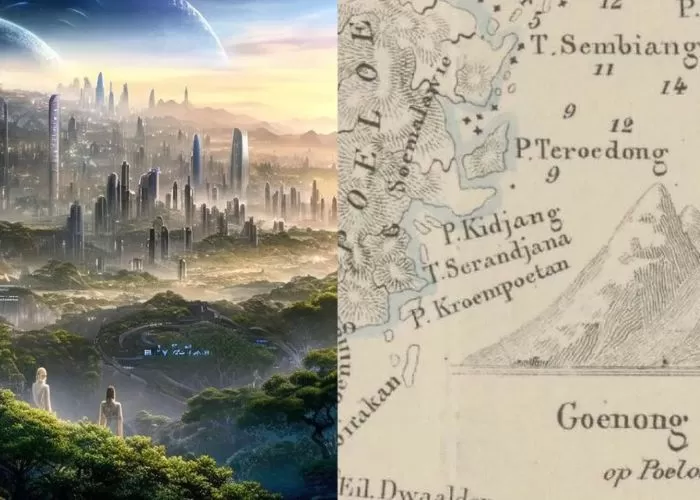The city of Saranjana, known as the magical city on the island of Kalimantan, has become a legend embedded in the history of the people of Kalimantan or Borneo.
Its mysterious existence and not being recorded on Indonesian maps adds to the charm and strangeness of this city, which is still a topic of conversation among local residents.
Here are some interesting facts about the Mystical City of Saranjana which holds a mystery in Kalimantan.
1. It is called the Invisible City
One of the characteristics of Saranjana City that makes it so mysterious is that it is not recorded on Indonesian maps.
Even so, its existence is strongly believed by the people of Kalimantan.
Saranjana is considered a city that cannot be reached by ordinary human eyes, it can only be seen through the mind’s eye.
Descriptions of this city create the image of an advanced civilization with towering buildings, similar to a dream city.
2. Found on Ancient Maps
Although its existence is not visible on modern maps of Indonesia, Saranjana was recorded on ancient maps.
Based on research results, this city was once established in the South Kalimantan region, specifically in Oka-oka Village, Pulau Laut Kelautan District, Kotabaru.
Several concrete pieces of evidence, such as Salomon Muller’s map in 1845, Isaac Dornseiffen’s map in 1868, Pieter Johannes Veth’s dictionary in 1869, and the Sketch Map of the Residency Southern and Eastern Division of Borneo in 1913, are traces of its existence.
However, this city later disappeared and remained only as a memory in historical records.
3. The Location Has Various Versions
The mystery of Saranjana continues to grow with various versions regarding its location.
Historian from Lambung Mangkurat University (ULM), Mansyur, noted several versions that developed in society.
Some say Saranjana is in Kotabaru, South Kalimantan, while another version places it in Tamiang Bay, Pulau Laut.
A more firm version identifies the Saranjana area as being on a small hill in Oka-oka Village, Pulau Laut Kelautan District, South Kalimantan.
Even though it has the potential to become a tourist destination, this place is considered haunted by local residents.
4. Associated with the Legend of Mount Sebatung
The legend of Mount Sebatung also enriches the story about Saranjana. The existence of this city is associated with the story of the creation of Mount Sebatung in Kalimantan.
In the past, the Pulau Laut area was controlled by the Halimun Kingdom led by King Pakurindang.
Legend has it that King Pakurindang had two children, Sambu Ranjana and Sambu Batung, who later controlled the human and supernatural realms respectively.
Sambu Batung became Mount Sebatung, while Sambu Ranjana built Saranjana City in the supernatural world.
5. The name Saranjana is compatible with Terajana and Saranghaeyo
The name Saranjana has also become a topic of conversation because of its similarity to several words, such as “terajana” which was popularized by Roma Irama, and “saranghaeyo” which is often heard in Korean dramas.
Historian Mansyur noted that although there are similarities in pronunciation, the meaning of the two words is very different from the characteristics of Saranjana which have been supported by authentic facts.
For example, “terajana” in the Roma song Irama means “how are you,” while “saranghaeyo” in Korean means “love,” which is clearly different from the context of Saranjana.
With all the mystery and legends that surround Saranjana City, this story remains an attraction for the people of Kalimantan.
Even though its existence may only be recorded in history and folklore, Saranjana continues to live on as part of the cultural heritage that is embedded in the hearts of the local population.
A magical story that continues to invite curiosity and admiration for the natural and cultural wonders of Kalimantan.


